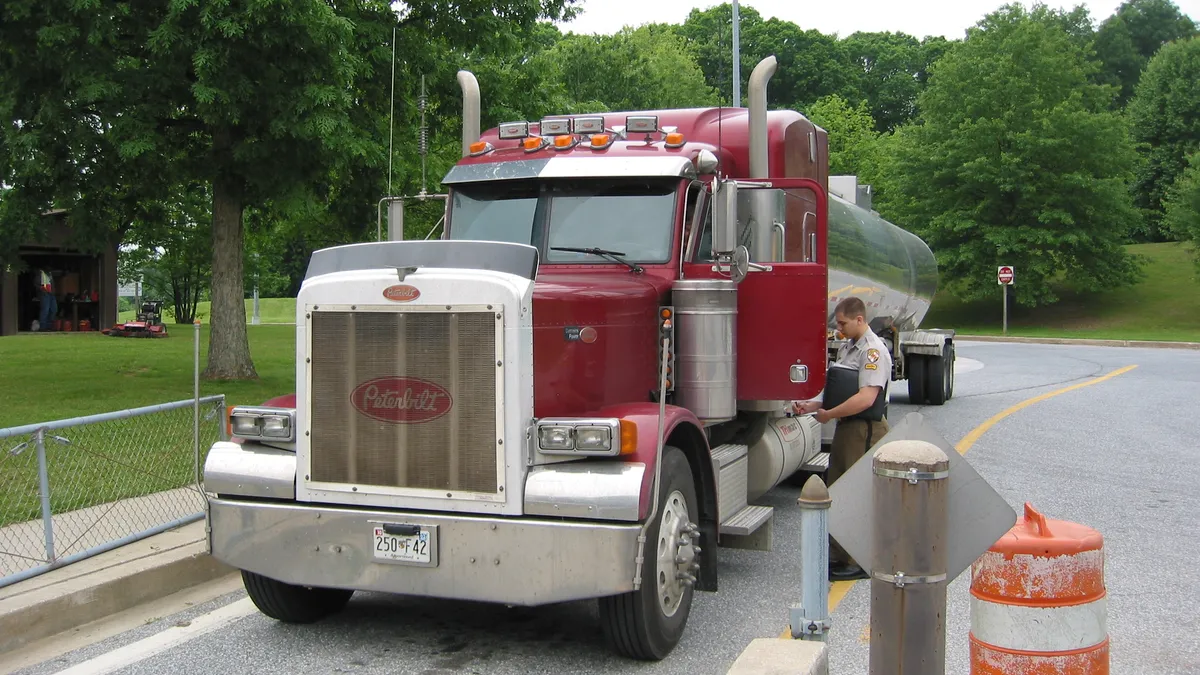Officials across the United States, Canada and Mexico will step up commercial vehicle safety inspections this week, as part of the annual International Roadcheck.
From May 17 to 19, safety officials will conduct both random and probable-cause inspections at weigh stations, temporary inspection sites, and with roving patrols on the road. The Commercial Vehicle Safety Alliance, which runs the event, is expected to complete 70,000 inspections this year, 30,000 more than in 2021.
The checks, which follow the North American Standard Inspection levels, will place an emphasis on vehicle's wheel end components.
“That includes tires, lugs, wheels, brake drums and anything that supports the structural integrity of the vehicle and the load,” said Christopher Turner, director of enforcement data and judicial outreach for the CVSA. “We want to make sure all wheel ends are in good working order.”
"Small things can add unwanted points to an inspection.”

Derek Barrs
Retired Chief of Florida Patrol and Consultant at HNTB Corporation
The focus on wheel ends is intentional. Each year, a committee within CVSA considers data from the previous year to decide the safety focus area and dates for the annual Roadcheck. Once a focus area is set, CVSA offers trainings for both officers and trucking companies on the concentration area, Turner said.
Picking such a focus turns inspections into an opportunity for trucking companies, drivers and safety inspectors alike.
“The annual focus area allows us to share with our fleet specifics pertaining to that vehicle component during the Roadcheck event,” said Tom DiSalvi, vice-president of safety, training and compliance for Schneider National, in an email. “CVSA always does a great job of creating a one-page overview for us to use with our fleet and our maintenance group in advance of the event, which includes additional details on the focus item.”
Symptoms of problems with wheel ends on a semi-truck can include a hot hubcap, uneven wear on tire(s), vibration and atypical brake functioning. By homing in on wheel ends, inspectors can better monitor for improvement in the coming year, said Derek Barrs, a retired chief of the Florida Highway Patrol who now acts as a consultant for HNTB Corporation.
During Roadcheck, vehicles and drivers that pass a North American Standard Level I inspection may receive a CVSA decal. That’s a 37-step process that is the same in every state, explained Barrs. With that decal on their truck, he said, the driver has the potential of not being stopped for another inspection for three months.
“This only applies to Level 1 because the other levels aren’t considered full inspections,” Barrs said.
A successful Roadcheck always comes with a few obstacles, though.
“There’s always stress with inspections,” Turner said, noting he has heard that drivers say, 'Roadcheck is a great time to take vacation' and 'I might get stopped multiple times.'
And due to both natural progression and turnover, different jurisdictions may not have enough employees to handle both Roadcheck and their day-to-day operations, Barrs said.
From DiSalvi’s perspective, Roadcheck is a chance to heighten the importance of the pre-trip inspection drivers conduct everyday, and to educate newer drivers who may not have experienced an inspection yet.
“We expect our fleet to be prepared for inspection year-round,” noted DiSalvi.
Last year, while 83.5% of the commercial motor vehicles examined "had no out-of-service violations," the CVSA said inspectors removed 6,710 vehicles and 2,080 from roadways as a result of Roadcheck.
Barrs suggested that fleet drivers take the time necessary for their pre- and post-trip self-inspections. For carrier executives, he recommended continuous education within the company and to reward drivers in some way if they are doing something worthwhile.
“Make sure you’re always doing the small things. For example, if a marker light is out, take care of it,” Barrs urged. “Small things can add unwanted points to an inspection.”












